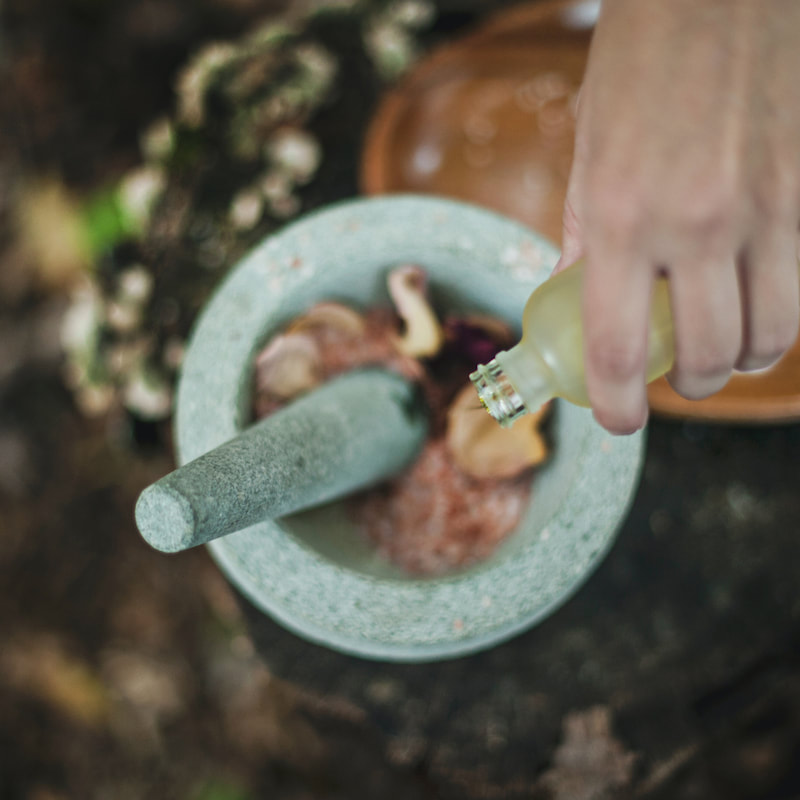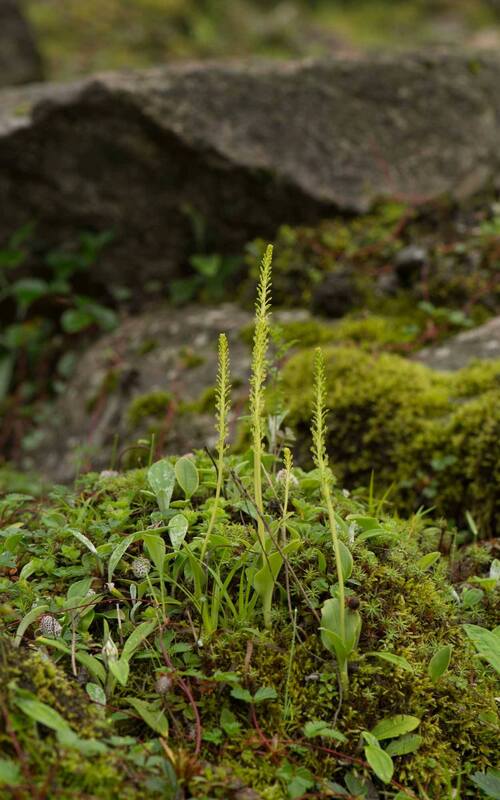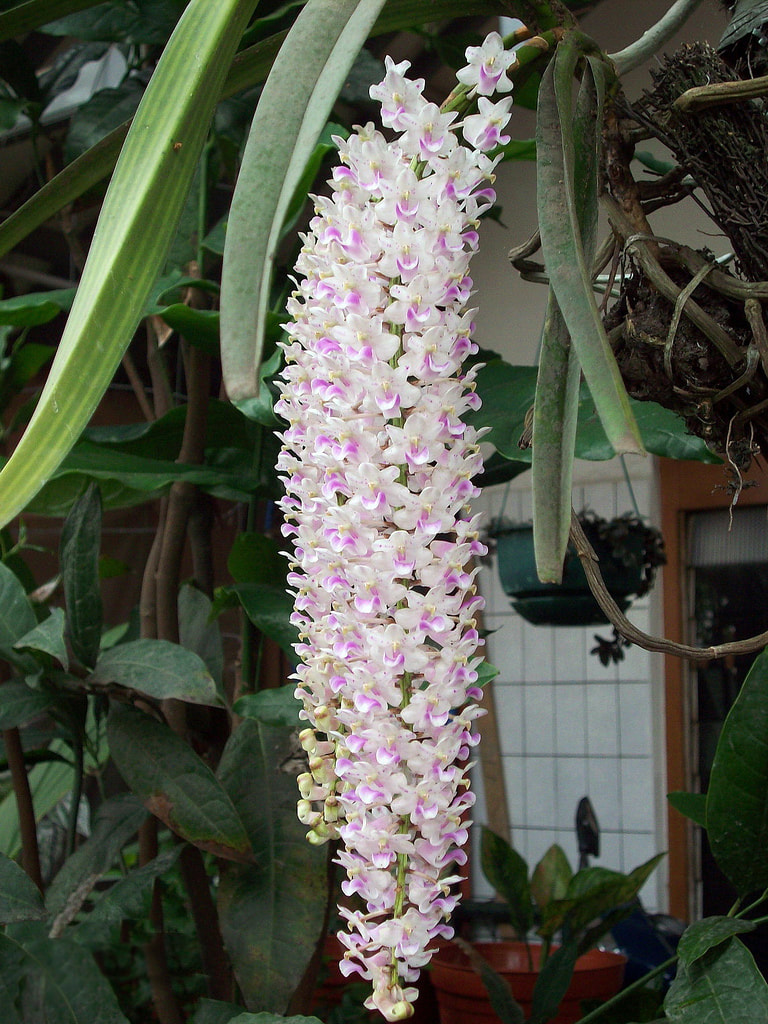Therapeutic Orchids in Ayurveda: Harnessing Nature's Healing Powers
Ayurveda, the ancient Indian system of medicine, is deeply rooted in the concept of holistic healing and natural remedies. Throughout history, various plants and herbs have been utilized for their medicinal properties, and one group of plants that holds a significant place in Ayurvedic medicine is orchids. Orchids, renowned for their beauty and elegance, have also been treasured for their therapeutic benefits, offering a diverse range of healing properties that have been harnessed for centuries.
In Ayurveda, orchids are known for their ability to balance the body's energies, or doshas, namely Vata, Pitta, and Kapha. Each type of orchid is believed to possess unique healing qualities that can address specific health issues and imbalances. Orchids have been incorporated into various Ayurvedic treatments, including herbal remedies, essential oils, and aromatic therapies.
One prominent therapeutic orchid in Ayurveda is the Vanda coerulea, commonly known as the Blue Vanda or Neelakurinji in Sanskrit. This orchid is highly regarded for its ability to alleviate ailments related to the nervous system, providing calming and stress-relieving effects. Its essential oil is often used in aromatherapy to promote relaxation, reduce anxiety, and improve sleep quality.
Another notable orchid in Ayurveda is the Dendrobium nobile, known as the Noble Dendrobium or Shita Bhraun in Ayurvedic terminology. This orchid is believed to possess potent anti-inflammatory properties and is commonly used to address conditions such as arthritis and joint pain. Its medicinal benefits are often extracted through decoctions or tinctures to create herbal formulations that aid in reducing inflammation and promoting joint health.
The Vanda roxburghii, or Sweta Kurinji, is yet another orchid with therapeutic significance in Ayurveda. This particular orchid is believed to have potent antimicrobial properties and is utilized to combat various bacterial and viral infections. In Ayurvedic practice, Sweta Kurinji is often used in the treatment of respiratory ailments, including colds, coughs, and bronchitis.
Beyond their specific medicinal uses, orchids play an essential role in Ayurvedic aromatic therapies. The delicate and enchanting fragrance of orchids is known to have a soothing effect on the mind and spirit. Orchid-infused essential oils and floral waters are commonly used in aromatherapy to promote emotional well-being, alleviate stress, and enhance relaxation.
In Ayurveda, the therapeutic properties of orchids are also thought to have a subtle impact on the subtle energy centers of the body known as chakras. By balancing the chakras, orchids are believed to harmonize the flow of vital energy, bringing about a sense of overall balance and vitality.
It is important to note that while orchids hold great therapeutic potential in Ayurveda, the use of these plants for medicinal purposes requires expert knowledge and careful preparation. Proper identification, processing, and dosage are essential to ensure their safe and effective use. Ayurvedic practitioners, with their in-depth understanding of medicinal plants and formulations, play a pivotal role in utilizing orchids and other natural remedies to restore health and promote well-being.
As the world increasingly embraces holistic approaches to health and wellness, the ancient wisdom of Ayurveda and its reverence for nature's healing powers continue to gain recognition. Orchids, with their captivating beauty and diverse healing properties, serve as a testament to the profound connection between humans and the natural world, reminding us of the abundant gifts that nature offers for our well-being and healing. In the realm of Ayurveda, the therapeutic potential of orchids remains a testament to the timeless wisdom of ancient healing traditions and their relevance in our modern lives.
Ayurveda, the ancient Indian system of medicine, is deeply rooted in the concept of holistic healing and natural remedies. Throughout history, various plants and herbs have been utilized for their medicinal properties, and one group of plants that holds a significant place in Ayurvedic medicine is orchids. Orchids, renowned for their beauty and elegance, have also been treasured for their therapeutic benefits, offering a diverse range of healing properties that have been harnessed for centuries.
In Ayurveda, orchids are known for their ability to balance the body's energies, or doshas, namely Vata, Pitta, and Kapha. Each type of orchid is believed to possess unique healing qualities that can address specific health issues and imbalances. Orchids have been incorporated into various Ayurvedic treatments, including herbal remedies, essential oils, and aromatic therapies.
One prominent therapeutic orchid in Ayurveda is the Vanda coerulea, commonly known as the Blue Vanda or Neelakurinji in Sanskrit. This orchid is highly regarded for its ability to alleviate ailments related to the nervous system, providing calming and stress-relieving effects. Its essential oil is often used in aromatherapy to promote relaxation, reduce anxiety, and improve sleep quality.
Another notable orchid in Ayurveda is the Dendrobium nobile, known as the Noble Dendrobium or Shita Bhraun in Ayurvedic terminology. This orchid is believed to possess potent anti-inflammatory properties and is commonly used to address conditions such as arthritis and joint pain. Its medicinal benefits are often extracted through decoctions or tinctures to create herbal formulations that aid in reducing inflammation and promoting joint health.
The Vanda roxburghii, or Sweta Kurinji, is yet another orchid with therapeutic significance in Ayurveda. This particular orchid is believed to have potent antimicrobial properties and is utilized to combat various bacterial and viral infections. In Ayurvedic practice, Sweta Kurinji is often used in the treatment of respiratory ailments, including colds, coughs, and bronchitis.
Beyond their specific medicinal uses, orchids play an essential role in Ayurvedic aromatic therapies. The delicate and enchanting fragrance of orchids is known to have a soothing effect on the mind and spirit. Orchid-infused essential oils and floral waters are commonly used in aromatherapy to promote emotional well-being, alleviate stress, and enhance relaxation.
In Ayurveda, the therapeutic properties of orchids are also thought to have a subtle impact on the subtle energy centers of the body known as chakras. By balancing the chakras, orchids are believed to harmonize the flow of vital energy, bringing about a sense of overall balance and vitality.
It is important to note that while orchids hold great therapeutic potential in Ayurveda, the use of these plants for medicinal purposes requires expert knowledge and careful preparation. Proper identification, processing, and dosage are essential to ensure their safe and effective use. Ayurvedic practitioners, with their in-depth understanding of medicinal plants and formulations, play a pivotal role in utilizing orchids and other natural remedies to restore health and promote well-being.
As the world increasingly embraces holistic approaches to health and wellness, the ancient wisdom of Ayurveda and its reverence for nature's healing powers continue to gain recognition. Orchids, with their captivating beauty and diverse healing properties, serve as a testament to the profound connection between humans and the natural world, reminding us of the abundant gifts that nature offers for our well-being and healing. In the realm of Ayurveda, the therapeutic potential of orchids remains a testament to the timeless wisdom of ancient healing traditions and their relevance in our modern lives.
To experience augmented reality, please open the Facebook-app using QR code and point to the image below
In Ayurvedic medicine, the utilization of orchids extends to approximately 50 different species, each offering unique medicinal properties and therapeutic benefits. Among these orchids, two of the most commonly used drugs in Ayurveda are Jīvantī (Dendrobium macraei) and Rāsnā (Rhynchostylis retusa), both of which are revered for their healing potential.
Jīvantī, derived from the Dendrobium macraei orchid, is highly esteemed for its rejuvenating and revitalizing properties. In Ayurveda, it is considered a Rasayana herb, a class of remedies known for promoting longevity, vitality, and overall well-being. Jīvantī is believed to strengthen the immune system, enhance physical endurance, and support the body's natural healing processes. This orchid is commonly used to address fatigue, weakness, and debility, making it a valuable addition to formulations aimed at enhancing vitality and energy levels.
Rāsnā, obtained from the Rhynchostylis retusa orchid, is renowned for its anti-inflammatory and analgesic properties. It has been traditionally used in Ayurvedic medicine to alleviate joint pain, inflammation, and musculoskeletal disorders. Rāsnā is particularly valued for its ability to support joint health and promote flexibility, making it a popular choice for treating conditions such as arthritis and rheumatism.
In addition to Jīvantī and Rāsnā, other orchids in Ayurvedic medicine have been found to contain a diverse array of chemical constituents that contribute to their therapeutic effects. Alkaloids, triterpenoids, flavonoids, and stibenoid are some of the major chemical compounds reported in various orchid species. These compounds play vital roles in influencing the medicinal properties of the orchids, such as their anti-inflammatory, antioxidant, and antimicrobial activities.
The alkaloids found in certain orchids have been shown to possess analgesic and antipyretic properties, offering potential relief from pain and fever. Triterpenoids, on the other hand, have been found to exhibit anti-inflammatory effects, making them valuable in treating inflammatory conditions and promoting overall health.
Flavonoids, known for their potent antioxidant properties, help protect the body from oxidative stress and cellular damage caused by free radicals. The presence of flavonoids in certain orchids contributes to their ability to support the immune system and combat oxidative stress, which is beneficial in promoting overall well-being and longevity.
Stibenoids, another class of compounds found in orchids, have shown potential antimicrobial effects, which may help in combating various infections and supporting the body's defense against pathogens.
The diverse chemical composition of orchids underscores their versatility and potential in Ayurvedic medicine. Their use in formulations and remedies is a testament to the ancient wisdom of Ayurveda, where the emphasis on harnessing the healing powers of nature is foundational.
It is essential to note that the proper identification, preparation, and administration of orchids in Ayurvedic medicine require expertise and knowledge. Ayurvedic practitioners, with their profound understanding of medicinal plants and formulations, skillfully employ these orchids to create well-balanced and effective remedies tailored to individual needs.
In conclusion, orchids in Ayurvedic medicine offer a rich tapestry of therapeutic benefits, with each species possessing its unique properties and contributions to holistic healing. Their integration into Ayurvedic formulations further demonstrates the profound connection between humans and the natural world, where the treasures of nature hold boundless potential for promoting health, well-being, and harmony in both body and mind.
Jīvantī, derived from the Dendrobium macraei orchid, is highly esteemed for its rejuvenating and revitalizing properties. In Ayurveda, it is considered a Rasayana herb, a class of remedies known for promoting longevity, vitality, and overall well-being. Jīvantī is believed to strengthen the immune system, enhance physical endurance, and support the body's natural healing processes. This orchid is commonly used to address fatigue, weakness, and debility, making it a valuable addition to formulations aimed at enhancing vitality and energy levels.
Rāsnā, obtained from the Rhynchostylis retusa orchid, is renowned for its anti-inflammatory and analgesic properties. It has been traditionally used in Ayurvedic medicine to alleviate joint pain, inflammation, and musculoskeletal disorders. Rāsnā is particularly valued for its ability to support joint health and promote flexibility, making it a popular choice for treating conditions such as arthritis and rheumatism.
In addition to Jīvantī and Rāsnā, other orchids in Ayurvedic medicine have been found to contain a diverse array of chemical constituents that contribute to their therapeutic effects. Alkaloids, triterpenoids, flavonoids, and stibenoid are some of the major chemical compounds reported in various orchid species. These compounds play vital roles in influencing the medicinal properties of the orchids, such as their anti-inflammatory, antioxidant, and antimicrobial activities.
The alkaloids found in certain orchids have been shown to possess analgesic and antipyretic properties, offering potential relief from pain and fever. Triterpenoids, on the other hand, have been found to exhibit anti-inflammatory effects, making them valuable in treating inflammatory conditions and promoting overall health.
Flavonoids, known for their potent antioxidant properties, help protect the body from oxidative stress and cellular damage caused by free radicals. The presence of flavonoids in certain orchids contributes to their ability to support the immune system and combat oxidative stress, which is beneficial in promoting overall well-being and longevity.
Stibenoids, another class of compounds found in orchids, have shown potential antimicrobial effects, which may help in combating various infections and supporting the body's defense against pathogens.
The diverse chemical composition of orchids underscores their versatility and potential in Ayurvedic medicine. Their use in formulations and remedies is a testament to the ancient wisdom of Ayurveda, where the emphasis on harnessing the healing powers of nature is foundational.
It is essential to note that the proper identification, preparation, and administration of orchids in Ayurvedic medicine require expertise and knowledge. Ayurvedic practitioners, with their profound understanding of medicinal plants and formulations, skillfully employ these orchids to create well-balanced and effective remedies tailored to individual needs.
In conclusion, orchids in Ayurvedic medicine offer a rich tapestry of therapeutic benefits, with each species possessing its unique properties and contributions to holistic healing. Their integration into Ayurvedic formulations further demonstrates the profound connection between humans and the natural world, where the treasures of nature hold boundless potential for promoting health, well-being, and harmony in both body and mind.
In the realm of traditional medicine in the Indian subcontinent, orchids hold a significant place as valuable therapeutic ingredients in various classical formulations. One such prominent example is Asthavarga, which finds its application in many classical formulations like Chyavanprash. Asthavarga is known to contain four species of orchids: Malaxis muscifrea, Malaxis acuminata, Habenaria intermedia, and Habenaria edgeworthi. These orchids contribute their unique properties to the formulation, enhancing its efficacy and health-promoting benefits.
Cypripedium parviflorum, commonly known as Lady's Slipper Orchid, is another orchid species widely acclaimed for its medicinal uses. It is esteemed for its aphrodisiac and nervine tonic properties, making it a valuable herbal remedy for enhancing vitality and promoting overall nervous system health.
Various other orchid species play vital roles in traditional healing practices across the Indian subcontinent. Here are some notable examples:
Dendrobium fimbriatum, Papilionanthe teres, Eria musicucola, Eulophia compestris, Satyrium nepalense, Laparis odorata, Orchis latifolia, Vanda cristata, V. tessalata, V. coerula, V. spathulata, Cymbidium giganteum, C. aloifolium, and C. williamsonii are among the orchid species extensively used by traditional healers. Each of these orchids possesses specific medicinal properties that contribute to their therapeutic applications.
Dendrobium nobile and D. moschatum are revered for their medicinal value in various traditional systems of medicine. These orchids have been historically employed for their health-enhancing effects and are often incorporated into herbal remedies.
Phaius tancarvilleae, known as the Nun Orchid, holds medicinal significance for its potential health benefits. It has been traditionally used in herbal formulations to address specific health concerns.
Orchis italica, also known as the Naked Man Orchid, has a unique appearance resembling a man. In some traditional practices, it is believed to possess properties that can support certain aspects of men's health.
The above-mentioned orchid species exemplify the rich diversity and traditional knowledge associated with the use of orchids in the Indian subcontinent. Traditional healers and practitioners have long valued the therapeutic properties of these orchids and incorporated them into various herbal formulations to address a wide range of health conditions.
It is important to emphasize that the utilization of these orchid species in traditional medicine requires expert knowledge and understanding. Traditional healers, through their experience and traditional wisdom, ensure that these orchids are sustainably harvested and used responsibly, preserving the delicate balance between human health and nature's offerings
.
As we delve deeper into the healing properties of orchids, we discover the profound connection between humans and the natural world. The rich biodiversity of orchids provides a treasure trove of potential remedies that continue to be explored and integrated into traditional healing practices, perpetuating the timeless wisdom of the Indian subcontinent's traditional medicine for generations to come.
Cypripedium parviflorum, commonly known as Lady's Slipper Orchid, is another orchid species widely acclaimed for its medicinal uses. It is esteemed for its aphrodisiac and nervine tonic properties, making it a valuable herbal remedy for enhancing vitality and promoting overall nervous system health.
Various other orchid species play vital roles in traditional healing practices across the Indian subcontinent. Here are some notable examples:
Dendrobium fimbriatum, Papilionanthe teres, Eria musicucola, Eulophia compestris, Satyrium nepalense, Laparis odorata, Orchis latifolia, Vanda cristata, V. tessalata, V. coerula, V. spathulata, Cymbidium giganteum, C. aloifolium, and C. williamsonii are among the orchid species extensively used by traditional healers. Each of these orchids possesses specific medicinal properties that contribute to their therapeutic applications.
Dendrobium nobile and D. moschatum are revered for their medicinal value in various traditional systems of medicine. These orchids have been historically employed for their health-enhancing effects and are often incorporated into herbal remedies.
Phaius tancarvilleae, known as the Nun Orchid, holds medicinal significance for its potential health benefits. It has been traditionally used in herbal formulations to address specific health concerns.
Orchis italica, also known as the Naked Man Orchid, has a unique appearance resembling a man. In some traditional practices, it is believed to possess properties that can support certain aspects of men's health.
The above-mentioned orchid species exemplify the rich diversity and traditional knowledge associated with the use of orchids in the Indian subcontinent. Traditional healers and practitioners have long valued the therapeutic properties of these orchids and incorporated them into various herbal formulations to address a wide range of health conditions.
It is important to emphasize that the utilization of these orchid species in traditional medicine requires expert knowledge and understanding. Traditional healers, through their experience and traditional wisdom, ensure that these orchids are sustainably harvested and used responsibly, preserving the delicate balance between human health and nature's offerings
.
As we delve deeper into the healing properties of orchids, we discover the profound connection between humans and the natural world. The rich biodiversity of orchids provides a treasure trove of potential remedies that continue to be explored and integrated into traditional healing practices, perpetuating the timeless wisdom of the Indian subcontinent's traditional medicine for generations to come.
In the rich tapestry of mythical medicine and folklore, one of the most fascinating elements is the concept of the "Sanjivini Booti," a legendary herb said to possess miraculous healing properties. According to ancient Indian mythology, the Sanjivini Booti played a pivotal role in the epic tale of the Ramayana, where it was believed to have been instrumental in saving the life of Lord Lakshmana, the younger brother of Lord Rama.
In the epic Ramayana, Lord Rama's beloved brother, Lakshmana, falls wounded during the fierce battle against the demon king Ravana's forces. His life hangs in the balance, and in a desperate bid to save him, Hanuman, the loyal devotee and monkey god, embarks on a quest to find the elusive Sanjivini Booti, which had the power to heal any ailment and restore life.
Hanuman's search leads him to the Himalayas, where the legendary herb is believed to grow. Amidst the rugged terrain and dense forests, he finally finds the Sanjivini Booti, identified in some versions of the Ramayana as the Dendrobium plicatile orchid. This orchid species, which was once mistakenly classified as Desmotrichum fimbriatum or Flickingeria fimbriata, has been a subject of fascination for its potential mythical connections.
The Dendrobium plicatile, known for its resilience and ability to grow on open rocks along streams and rivers in the Himalayas and Southeast Asia, is a rather small epiphyte. It boasts a stout, branching rhizome with compressed, freely branching stems adorned with vibrant yellow flowers. It is within the folds of these bright yellow blossoms that the mythical healing powers of the Sanjivini Booti are believed to reside.
In the Ramayana, Hanuman, with his characteristic devotion and unwavering dedication, uproots an entire mountain and carries it back to the battlefield to revive Lakshmana. As the first rays of the sun hit the Sanjivini Booti, it springs to life and restores Lakshmana to health, thus becoming a symbol of hope, healing, and divine intervention.
The legend of the Sanjivini Booti continues to captivate the imagination of people across generations, serving as a testament to the belief in the miraculous healing properties of nature. While the Sanjivini Booti remains a mythical element in the epic Ramayana, it exemplifies the deep-rooted connection between nature and medicine in ancient folklore and mythology.
In modern times, the quest for the elusive Sanjivini Booti takes on new forms, as scientific research delves into the incredible healing potential of plants and herbs. The study of orchids, including the Dendrobium plicatile, has led to the discovery of numerous bioactive compounds with medicinal properties. Orchids have been found to contain alkaloids, flavonoids, terpenoids, and other chemical compounds that exhibit antioxidant, antimicrobial, anti-inflammatory, and anticancer properties.
While we may not find a literal Sanjivini Booti with magical healing powers, the ancient tales remind us of the profound knowledge and respect our ancestors had for the healing properties of plants. As we continue to explore the wonders of the natural world through scientific research, we uncover the potential of plants like the Dendrobium plicatile to contribute to modern medicine and enhance our understanding of the intricate relationship between nature and healing.
The mythical medicine of the Sanjivini Booti serves as a timeless reminder of the awe-inspiring power of nature and the profound wisdom passed down through centuries in the stories and folklore of ancient civilizations. It is a testament to the enduring human quest for health and well-being, and the belief in the extraordinary healing potential that lies within the embrace of nature's bounty.
In the epic Ramayana, Lord Rama's beloved brother, Lakshmana, falls wounded during the fierce battle against the demon king Ravana's forces. His life hangs in the balance, and in a desperate bid to save him, Hanuman, the loyal devotee and monkey god, embarks on a quest to find the elusive Sanjivini Booti, which had the power to heal any ailment and restore life.
Hanuman's search leads him to the Himalayas, where the legendary herb is believed to grow. Amidst the rugged terrain and dense forests, he finally finds the Sanjivini Booti, identified in some versions of the Ramayana as the Dendrobium plicatile orchid. This orchid species, which was once mistakenly classified as Desmotrichum fimbriatum or Flickingeria fimbriata, has been a subject of fascination for its potential mythical connections.
The Dendrobium plicatile, known for its resilience and ability to grow on open rocks along streams and rivers in the Himalayas and Southeast Asia, is a rather small epiphyte. It boasts a stout, branching rhizome with compressed, freely branching stems adorned with vibrant yellow flowers. It is within the folds of these bright yellow blossoms that the mythical healing powers of the Sanjivini Booti are believed to reside.
In the Ramayana, Hanuman, with his characteristic devotion and unwavering dedication, uproots an entire mountain and carries it back to the battlefield to revive Lakshmana. As the first rays of the sun hit the Sanjivini Booti, it springs to life and restores Lakshmana to health, thus becoming a symbol of hope, healing, and divine intervention.
The legend of the Sanjivini Booti continues to captivate the imagination of people across generations, serving as a testament to the belief in the miraculous healing properties of nature. While the Sanjivini Booti remains a mythical element in the epic Ramayana, it exemplifies the deep-rooted connection between nature and medicine in ancient folklore and mythology.
In modern times, the quest for the elusive Sanjivini Booti takes on new forms, as scientific research delves into the incredible healing potential of plants and herbs. The study of orchids, including the Dendrobium plicatile, has led to the discovery of numerous bioactive compounds with medicinal properties. Orchids have been found to contain alkaloids, flavonoids, terpenoids, and other chemical compounds that exhibit antioxidant, antimicrobial, anti-inflammatory, and anticancer properties.
While we may not find a literal Sanjivini Booti with magical healing powers, the ancient tales remind us of the profound knowledge and respect our ancestors had for the healing properties of plants. As we continue to explore the wonders of the natural world through scientific research, we uncover the potential of plants like the Dendrobium plicatile to contribute to modern medicine and enhance our understanding of the intricate relationship between nature and healing.
The mythical medicine of the Sanjivini Booti serves as a timeless reminder of the awe-inspiring power of nature and the profound wisdom passed down through centuries in the stories and folklore of ancient civilizations. It is a testament to the enduring human quest for health and well-being, and the belief in the extraordinary healing potential that lies within the embrace of nature's bounty.
Join Scentopia, Sentosa's latest tourist attraction wonderful orchid scent crafting, fragrance tour, bridal shower or corporate team building which includes perfume making onsite and offsite, beach activities and more. We also serve primary school learning journey, secondary students and pupil on industrial excursions. Know more about our orchids perfume bar or therapeutic orchid scents and other wellness aromas. Conatct Perfume workshop or book a scent crafting session here.




